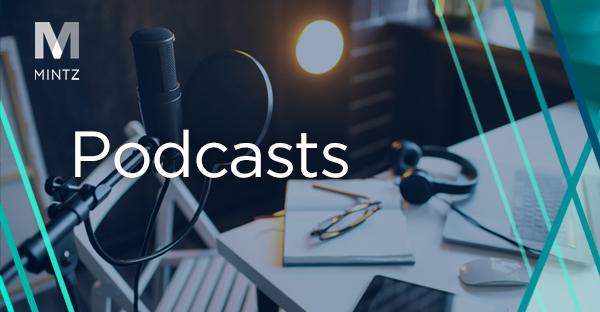
Employment
Viewpoints
Filter by:
Ninth Circuit Clarifies Requirements on Retroactive Overtime Pay Adjustments for Bonuses
June 10, 2021 | Blog | By Paul Huston
Bonuses and their impact on an employee’s “regular rate of pay” have long been a proverbial thorn in the side of California employers. The nondiscretionary nature of most bonuses (even those bonuses employers attempt to characterize as “discretionary”) makes them part of a non-exempt employee’s regular rate of pay for purposes of determining the appropriate overtime rate. Cal. Labor Code § 226 requires all hourly rates of pay to be reflected in employees’ pay statements. The ambiguity surrounding the extent to which this “hourly rate of pay” includes bonuses in all of their various forms and the related overtime adjustments can sometimes leave employers feeling uncertain as to how to ensure compliant paystubs when nondiscretionary bonuses are paid to non-exempt employees. A recent decision from the Ninth Circuit Court of Appeals offered some clarity.
Read more
Cal/OSHA Approves Minor Modifications to COVID-19 Prevention Emergency Temporary Standards (ETS)
June 8, 2021 | Blog | By Jennifer Rubin
Cal/OSHA has relaxed some of its COVID-19 Prevention Emergency Temporary Standards (ETS) for fully vaccinated individuals to better align with the California’s June 15, 2021 goal to end most mask and physical distancing requirements. But the proposed revisions stop short of fully adopting the May 13, 2021 CDC guidance for fully vaccinated individuals and do not (yet) provide guidance on several important issues, including the enforcement of documentation for vaccine verification and how employers can demonstrate that physical distancing is not feasible.
Read more
Massachusetts COVID-19 Emergency Paid Sick Leave
June 7, 2021 | Blog | By Andrew Matzkin, Natalie C. Groot
Massachusetts Governor Charlie Baker recently signed legislation requiring employers to provide COVID-19 emergency paid sick leave (“COVID-19 EPSL”) to employees who are unable to work for COVID-19-related reasons. In this post, we summarize and answer some frequently asked questions.
Read more
Khan v. PTC, Inc.—Three Important Lessons From An Otherwise Unremarkable 401(k) Fee Case
June 7, 2021 | Blog
According to Bloomberg Law, class actions challenging 401(k) plan fees are increasing at a record pace. The underlying claims in these class action suits fall into predictable categories that are all too familiar: excessive fees, poor fund choices, poor plan design, fiduciary neglect, and prohibited transactions. Khan v. PTC, Inc. fits the pattern. The plaintiffs claim that the fiduciaries of the PTC, Inc. 401(k) plan:
Read more
Call it a Comeback: The Likely Return of ESG Investing in ERISA Accounts
June 4, 2021 | Blog | By Pete Michaels , Alyssa C. Scruggs
Environmental, social, and governance (“ESG”) investing has experienced quite the regulatory roller coaster in recent years.
Read more
Retirement Committee Field Guide: The Basics of Retirement Committee Organization and Operation – Part 3
May 19, 2021 | Podcast
In this episode, we are joined by Ryan Campagna, Senior Vice President - Retirement Plan Advisory at Sentinel Benefits & Financial Group, who will help us continue our exploration surrounding what retirement committees do and how they operate.
Read more
New York State’s HERO Act Imposes New Workplace Health and Safety Obligations on Employers
May 19, 2021 | Blog | By Corbin Carter, Michael Arnold
The New York State Legislature recently passed the Health and Essential Rights Act (the “HERO Act”), which has been delivered to Governor Cuomo for his signature. The legislation seeks to address continued COVID-19 safety concerns in the workplace and is designed to codify, supplement, and replace numerous executive actions that have been issued throughout the pandemic. The HERO Act would also pass into law significant new health and safety obligations for New York employers, including the formation of joint labor-management workplace safety committees to help ensure worker safety. Employers should prepare now to come into compliance with the new law, which we summarize below.
Read more
Have You Been Vaccinated? Your Employer (and Everyone Else) Wants to Know
May 17, 2021 | Blog | By Jennifer Rubin, Michael Arnold
The CDC’s recent guidance suggesting that most fully vaccinated individuals may discontinue certain safety measures, such as masking and social distancing, has created significant confusion for employers navigating conflicting and ever-changing state and local COVID-19 workplace laws, regulations and guidance. While the most recent CDC guidance endorses resuming activities (indoors and out) without masks for most fully vaccinated individuals, the guidance around vaccination verification and disparate treatment between the vaccinated and unvaccinated is still lacking. Employers are now facing these sensitive but critically important return to office issues without the benefit of critical guidance from Federal, state and local regulators. We provide some guidance below regarding vaccine verification and some considerations for employers thinking about instituting vaccine policies.
Read more
CDC Vaccination Guidance Does Not Supersede State and Local Workplace Regulations
May 14, 2021 | Blog | By Danielle Bereznay, Jennifer Rubin, Michael Arnold, Corbin Carter
On May 13, 2021, the Centers for Disease Control and Prevention (the “CDC”) published guidance indicating that fully vaccinated individuals do not need to wear a mask or physically distance in certain indoor and outdoor environments, except where otherwise required by federal, state, local, tribal, or territorial laws, rules, and regulations, including local business and workplace guidance. The guidance does not apply to healthcare settings and certain other environments.
Read more
It’s 2021—Do You Know Where Your Employees Are?
May 5, 2021 | Blog | By Jennifer Rubin
Many employees relocated during the Covid-19 pandemic and some are expected to continue working remotely, creating complexities for employers because of state and local wage-and-hour laws and other regulations, says Mintz employment partner Jen Rubin. She explains how organizations can get a handle on where their employees are working and why they need to do so.
Read more
New York Amends its Off-Duty Conduct Law to Account for Marijuana Use
May 3, 2021 | Blog | By Michael Arnold, Danielle Bereznay, Corbin Carter
New York’s off duty conduct law will now explicitly apply to an employee’s off-duty use of cannabis. The change in law came as a result of the recent passage of “The Marijuana Regulation and Taxation Act,” which generally legalized the sale and use of cannabis for individuals 21 and over, and presents real compliance challenges for employers, which we discuss further below.
Read more
Department of Labor Issues Model COBRA Subsidy Notices and FAQs
April 22, 2021 | Blog | By Michael Arnold, Corbin Carter
The Department of Labor has issued model notices regarding COBRA premium assistance (a/k/a COBRA subsidies). As we wrote about here, as part of the American Rescue Plan Act of 2021, Congress sought to enable qualifying individuals – known under the law as “Assistance Eligible Individuals” – to continue their healthcare coverage by subsidizing their COBRA premium payments for the period between April 1 and September 30, 2021. We discuss these notice requirements and related issues below.
Read more
Retirement Committee Field Guide: The Basics of Retirement Committee Organization and Operation – Part 2
April 15, 2021 | Podcast
In this episode, we are joined by Mark Wetzel, Managing Partner, President of Fiducient Advisors, who will help us continue our exploration surrounding what retirement committees do and how they operate.
Read more
The American Recovery Plan Provides (Generous and Administratively Challenging) COBRA Subsidies
March 18, 2021 | Blog
The recently enacted American Rescue Plan Act of 2021 (the “Act”) creates a federal subsidy covering 100% of COBRA premiums for certain employees and other qualified beneficiaries. The subsidy is payable during the six-month period commencing April 1, 2021 and ending September 30, 2021. Individuals who previously experienced an involuntary termination, or reduction in hours, but who did not elect COBRA, are allowed to enroll. Similarly, individuals who dropped COBRA coverage, but who are still within their original COBRA coverage period, are allowed to re-enroll. Employers are reimbursed for the cost of the subsidy through a payroll tax credit.
Read more
ALERT: New COVID-19 Vaccine Paid Leave for New York Employees
March 16, 2021 | Blog | By Corbin Carter
As we enter the second year of the COVID-19 pandemic, New York employers must now grapple with another new paid leave requirement from New York State. A new law signed by Governor Cuomo on March 12, 2021 amends New York’s Labor Law and entitles employees up to four hours of paid leave per COVID-19 vaccine injection. The law is effective immediately, and the law’s leave entitlement is set to expire on December 31, 2022. We note key provisions of the new law below.
Read more
Conference Recordings: Mintz's Annual Employment Law Summit
March 12, 2021 | Webinar | By Michael Arnold, David Barmak, Micha Mitch Danzig, Geri Haight, Andrew Matzkin, David Lagasse, Jennifer Rubin, Alexander Hecht, Danielle Bereznay, Delaney Busch, Corbin Carter, Emma Follansbee, Natalie C. Groot, Paul Huston, Brendan Lowd, Nicole Rivers, Richard Block
Mintz’s Annual Employment Law Summit brought together thought leaders to discuss the most pressing issues employers are facing in today’s unprecedented work environment. Attendees heard presentations on the continued impact of COVID-19; social justice and diversity, equity and inclusion initiatives; recent and anticipated changes to employment laws; and best practices for managing sensitive employee situations.
Read more
Retirement Committee Field Guide: The Basics of Retirement Committee Organization and Operation – Part 1
March 11, 2021 | Podcast
In this inaugural episode in our series, Mintz’s Alden Bianchi interviews Marsh & McLennan Agency’s Bob Clark to explore the basics of retirement plan governance, with a particular focus on the following topics:
Read more
Agencies Issue Needed Guidance on COBRA Elections During the COVID-19 “Outbreak Period”
March 3, 2021 | Blog
On February 26, 2021, the Department of Labor’s Employee Benefits Security Administration (EBSA) issued Notice 2021-01 (the “Notice”). The Notice was issued jointly with the Department of the Treasury, the Internal Revenue Service and the Department of Health and Human Services (the “Departments”). Entitled “Guidance on Continuation of Relief for Employee Benefit Plans and Plan Participants and Beneficiaries Due to the COVID-19 (Novel Coronavirus) Outbreak,” the Notice provides much needed guidance to group health plan sponsors on (among other things) when COBRA notice and election periods, which had been previously extended [in May 2020], will come to an end. This guidance was necessary because earlier regulatory relief extending COBRA notice and election periods was about to expire as a result of a statutory deadline. This post explains the impact of the Notice on sponsors of group health plans.
Read more
Navigating Voluntary COVID-19 Vaccination Programs & Incentives
February 19, 2021 | Blog | By Corbin Carter
As COVID-19 vaccines become more available, employment-based programs requiring or incentivizing employee vaccination will become more commonplace. In a previous post, we covered recent employer guidance from the CDC, with a particular focus on mandatory workplace testing programs. This post examines how an employer might design a voluntary workplace vaccination program using incentives to encourage participation, and how to avoid potential pitfalls in doing so.
Read more
Getting Back to Basics: Intermittent FMLA Leave
February 17, 2021 | Blog | By Delaney Busch
In concept, the FMLA is simple. In practice, however, administering FMLA leave, particularly on an intermittent basis can quickly become complicated, and many employers struggle trying to track and manage intermittent leaves. This post addresses some of the intermittent leave-related issues employers may face and offers best practices for ensuring compliance with the law.
Read more
Explore Other Viewpoints:
- Antitrust
- Appellate
- Arbitration, Mediation & Alternate Dispute Resolution
- Artificial Intelligence
- Awards
- Bankruptcy & Restructuring
- California Land Use
- Class Action
- Complex Commercial Litigation
- Construction
- Consumer Product Safety
- Cross-Border Asset Recovery
- Debt Financing
- Direct Investing (M&A)
- Diversity
- EB-5 Financing
- Education & Nonprofits
- Employment
- Energy & Sustainability
- Environmental Enforcement Defense
- Environmental Law
- FDA Regulatory
- Federal Circuit Appeals
- Financial Institution Litigation
- Government Law
- Growth Equity
- Health Care
- Health Care Compliance, Fraud and Abuse, & Regulatory Counseling
- Health Care Enforcement & Investigations
- Health Care Transactions
- Health Information Privacy & Security
- IP Due Diligence
- IPRs & Other Post Grant Proceedings
- Immigration
- Insolvency & Creditor Rights Litigation
- Institutional Investor Class Action Recovery
- Insurance & Financial Services
- Insurance Consulting & Risk Management
- Insurance and Reinsurance Problem-Solving & Dispute Resolution
- Intellectual Property
- Investment Funds
- Israel
- Licensing & Technology Transactions
- Life Sciences
- Litigation & Investigations
- M&A Litigation
- ML Strategies
- Medicare, Medicaid and Commercial Coverage & Reimbursement
- Mergers & Acquisitions
- Patent Litigation
- Patent Prosecution & Strategic Counseling
- Pharmacy Benefits and PBM Contracting
- Portfolio Companies
- Privacy & Cybersecurity
- Private Client
- Private Equity
- Pro Bono
- Products Liability & Complex Tort
- Projects & Infrastructure
- Public Finance
- Real Estate Litigation
- Real Estate Transactions
- Real Estate, Construction & Infrastructure
- Retail & Consumer Products
- Securities & Capital Markets
- Securities Litigation
- Special Purpose Acquisition Company (SPACs)
- Sports & Entertainment
- Strategic IP Monetization & Licensing
- Tax
- Technology
- Technology, Communications & Media
- Technology, Communications & Media Litigation
- Trade Secrets
- Trademark & Copyright
- Trademark Litigation
- Value-Based Care
- Venture Capital & Emerging Companies
- White Collar Defense & Government Investigations
- Women's Health and Technology






